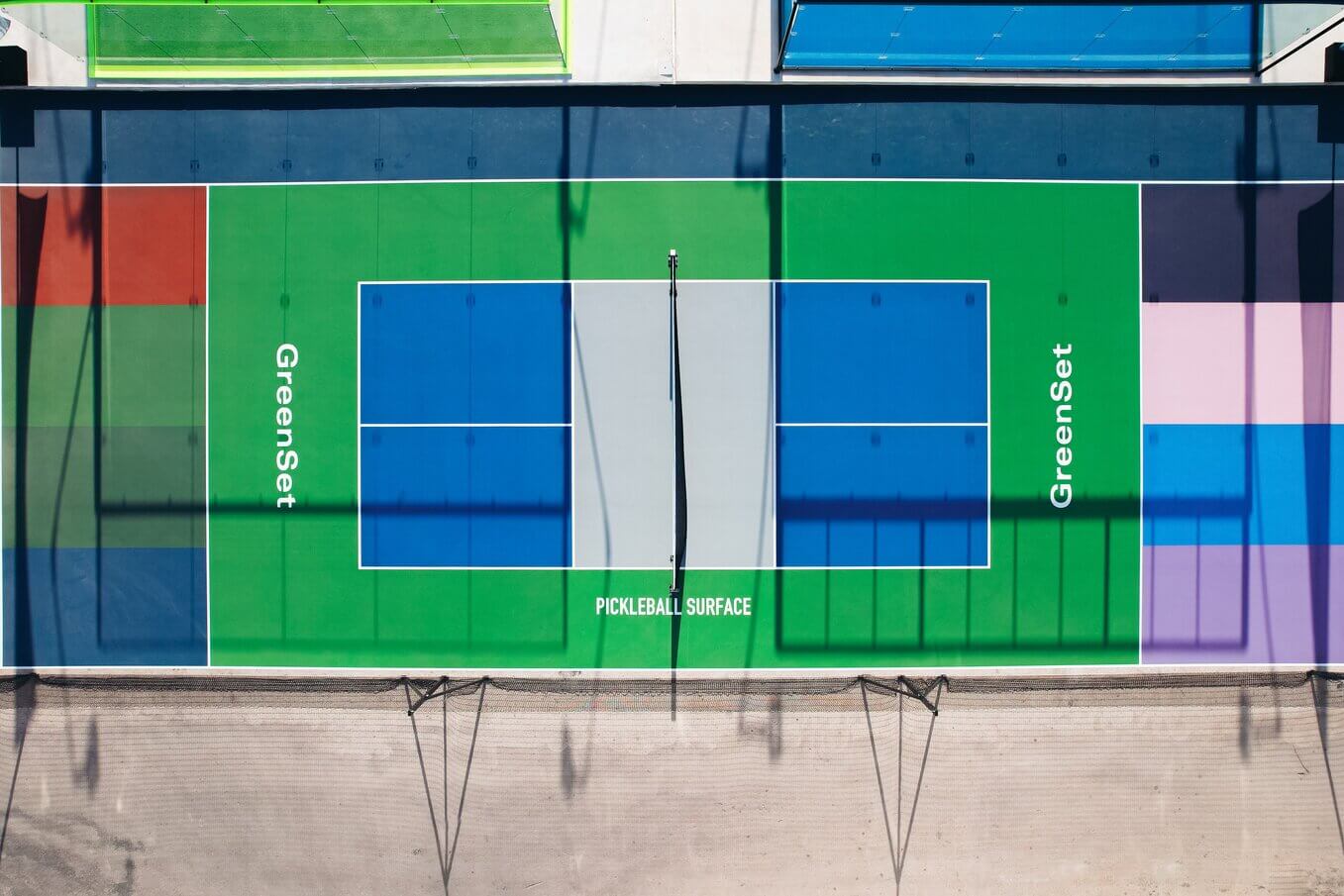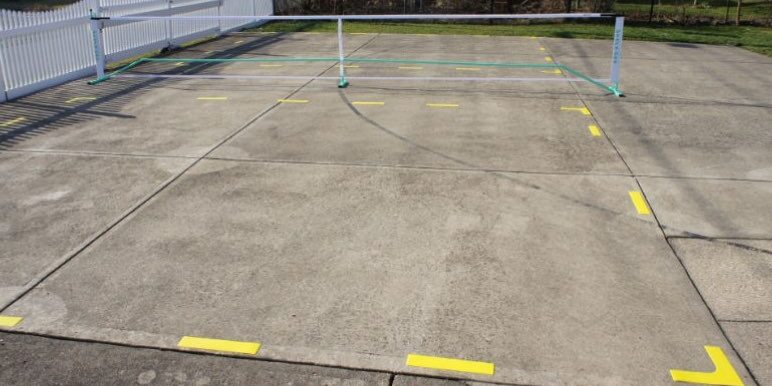Expert Pickleball Court Construction-- From Layout to Setup
Expert Pickleball Court Construction-- From Layout to Setup
Blog Article
Developing an Inclusive Setting: Obtainable Pickleball Court Layout
The style of pickleball courts plays an important duty in promoting a comprehensive atmosphere that suits players of all capabilities. By prioritizing access with thoughtful layout principles, such as smooth surfaces and adaptive tools, we can considerably boost involvement and enjoyment for every person involved. Involving with the community to collect comments is essential in guaranteeing that these facilities satisfy varied requirements. Nonetheless, the difficulty exists not only in implementing these layout features but additionally in understanding the more comprehensive ramifications for area engagement and social inclusion. What techniques can be used to stabilize these complicated aspects properly?
Relevance of Accessibility in Sports
The value of availability in sporting activities can not be overemphasized, as it ensures that people of all capacities can get involved, compete, and take pleasure in exercises. Developing available sporting activities environments is necessary for promoting inclusivity and advertising a sense of belonging among diverse populaces. When programs and facilities are designed with ease of access in mind, barriers are removed, enabling individuals with specials needs to engage fully in showing off activities.
Availability in sporting activities not only benefits participants but additionally enriches the community in its entirety. It urges partnership, breaks down preconception, and improves social communication amongst people with differing capacities. Easily accessible sporting activities initiatives can inspire a broader target market to value the value of physical task, leading to enhanced overall health and health in the area.
Furthermore, promoting accessibility aligns with ethical and lawful commitments to copyright the rights of individuals with disabilities. By focusing on inclusivity, sports companies demonstrate their dedication to equal rights and social obligation. Inevitably, accessible sports atmospheres develop possibilities for individual growth, empowerment, and accomplishment, ensuring that all individuals can experience the happiness and advantages of sporting activities engagement.
Trick Design Principles
Creating easily accessible pickleball courts requires cautious consideration of particular concepts that advertise inclusivity and capability. The court layout ought to permit for smooth navigating, featuring vast pathways that accommodate mobility devices and wheelchair gadgets. Pickleball court construction. The surface area material must provide sufficient traction and shock absorption to reduce the threat of injury for all gamers, including those with physical challenges
Following, suitable net heights and message placements should be standardized, ensuring that they are obtainable for players of differing capabilities. In addition, using contrasting shades for court lines enhances visibility, assisting players with aesthetic disabilities in browsing the court properly.
Furthermore, seats and resting areas need to be incorporated throughout the center, providing adequate space for individuals to relax without blocking movement pathways. Available restrooms and altering centers are likewise important, guaranteeing that all individuals have the necessary features.

Flexible Devices Options
Many adaptive devices options are offered to boost the pickleball experience for players with diverse abilities. These choices can significantly improve accessibility, allowing everybody to get involved fully in the game.

For players with flexibility difficulties, flexible sports mobility devices can be utilized. These wheelchairs are developed for agility on the court, including light-weight frameworks and progressed ability to move to allow quick movements and fast turns.
In addition, sphere retrievers can assist gamers with restricted wheelchair in recovering spheres that run out reach. These tools can be especially beneficial for people who might have a hard time to get to or flex down for the ball.

Court Layout Considerations
Producing an available pickleball court needs cautious consideration of the layout to guarantee all players can navigate the space conveniently and safely. A tactical court format prioritizes the needs of people with different wheelchair difficulties, ensuring equitable access to the game.
First, the court dimensions need to adhere to basic guidelines while additionally enabling additional space around the playing location. This buffer zone accommodates players utilizing wheelchairs or various other movement aids, minimizing the danger of collisions and promoting very easy movement. Paths leading to the court needs to be cost-free and broad of barriers, with a company, steady surface area that suits all users.
In addition, the placement of seats and seeing locations is critical (Pickleball court construction). These ought to be positioned to provide clear sightlines to the court without obstructing paths. Factor to consider needs to likewise be this link given to the place of signs, which should be clear and simple to review, including braille choices for visually damaged individuals
Neighborhood Interaction and Comments
Engaging the area in the growth of accessible pickleball courts is necessary to ensure that the demands and preferences of all possible users are properly met. This procedure starts with outreach efforts that welcome feedback from diverse teams, including people with seniors, households, and specials needs. Performing surveys, emphasis teams, and area meetings can provide important insights into specific ease of access obstacles and preferred attributes of the courts.
Along with collecting input, ongoing dialogue fosters a sense of possession among neighborhood participants, urging them to advocate for and use the centers. Cooperation with neighborhood companies and availability supporters can better boost this involvement, ensuring that the design procedure straightens with ideal standards and practices.
Furthermore, incorporating comments loops right into the task permits changes based upon real-world usage and customer experiences. Post-implementation analyses can recognize locations for renovation, making sure that the courts continue to be welcoming and easy to use in time. Ultimately, focusing on area engagement not just boosts the style process however additionally advertises a culture of inclusivity, guaranteeing that accessible pickleball courts serve as lively spaces for recreation and link for all individuals.
Conclusion
Finally, the facility of obtainable pickleball courts is vital for promoting inclusivity in sports. By prioritizing thoughtful layout concepts, incorporating adaptive devices, and taking into consideration court design, centers can successfully accommodate people of all capabilities. In addition, engaging the neighborhood via comments makes certain that diverse needs are met, promoting a setting that encourages involvement. Inevitably, such initiatives add to a more comprehensive sports society, promoting a sense of belonging for all individuals in the sporting activity of pickleball.
The layout of pickleball courts plays a vital role in cultivating a comprehensive setting that accommodates players of all abilities.Engaging the neighborhood in the development of accessible pickleball courts is important to guarantee that the needs and choices of all prospective individuals are efficiently met. Ultimately, prioritizing neighborhood interaction not just boosts the design process yet likewise advertises a culture of inclusivity, guaranteeing that obtainable pickleball courts serve as dynamic spaces for entertainment and connection for all people.
In conclusion, the facility of accessible pickleball courts is necessary for advertising inclusivity in sports. By prioritizing thoughtful style principles, incorporating adaptive devices, and considering important site court layout, facilities can successfully suit individuals of all capabilities.
Report this page